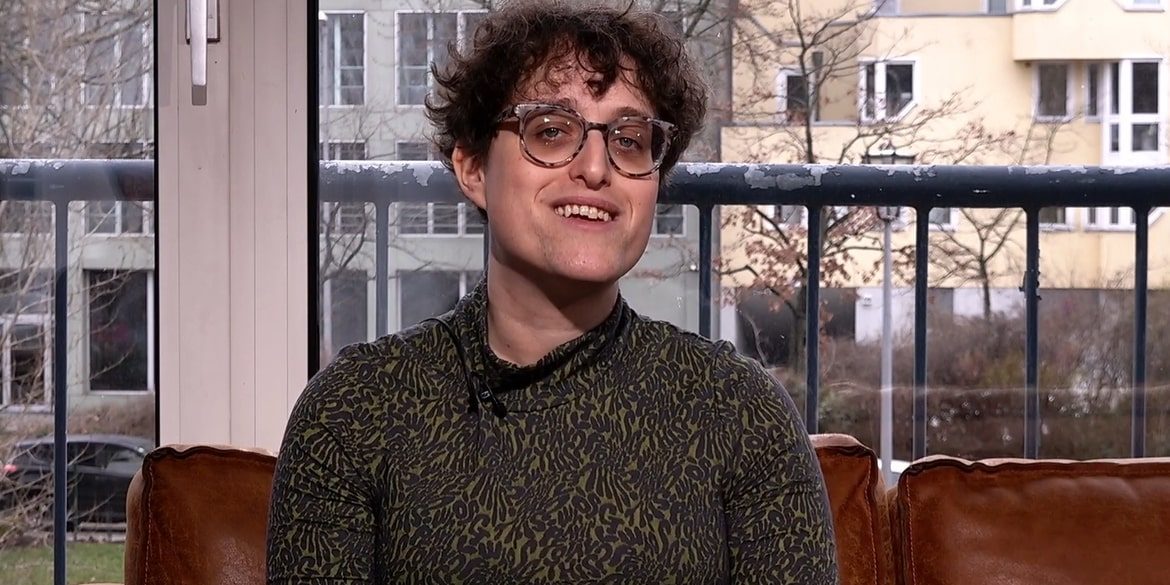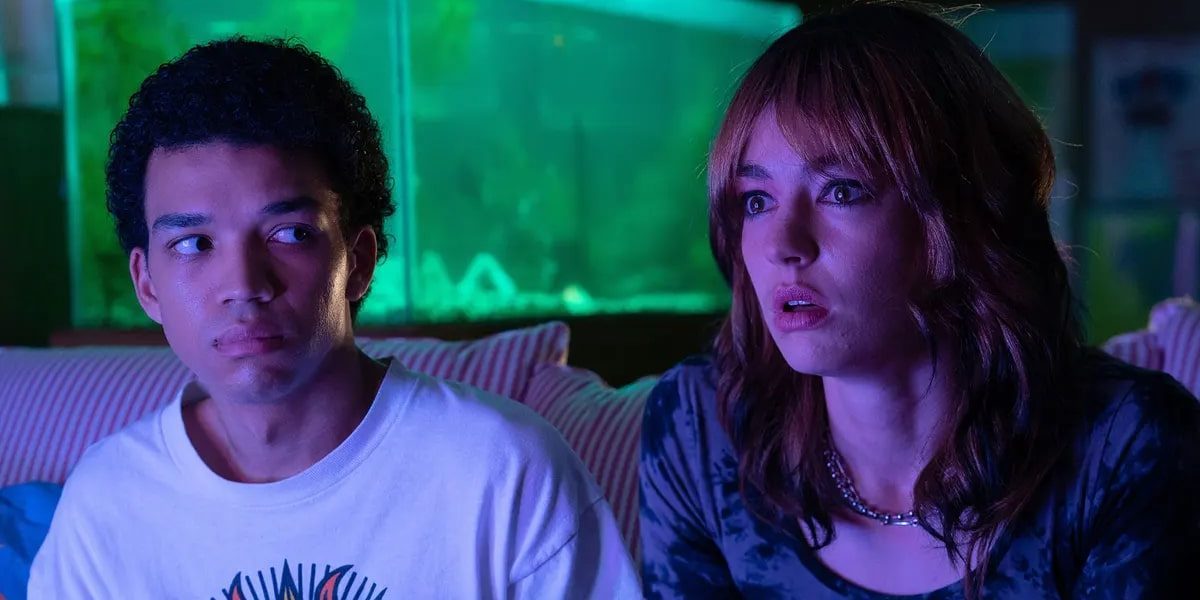Jane Schoenbrun’s ‘I Saw the TV Glow’ diverges from traditional horror tropes, eschewing jumpscares, poorly executed makeup, and lurking monsters in favor of a more profound, psychological horror. The film delves into the unsettling aspects of inner turmoil that linger long after the credits roll. Set in suburban New Jersey during the early 1990s, the narrative centers around Owen, a young boy grappling with his sexuality and gender identity amidst a sense of disconnection from his surroundings. Amidst his struggles, he connects with Maddy, a classmate dealing with her set of challenges.
The bond between Owen and Maddy deepens as they immerse themselves in the world of the TV show ‘The Pink Opaque.’ Their obsession with the show reaches its peak when it suddenly stops airing on the same day Maddy’s house catches fire, leading to her mysterious disappearance for nearly a decade. Convinced that the TV show represents their reality, a young Maddy believes that they must unite to break free from the confines of this surreal world. This thought-provoking narrative begs the question of whether the creation of the story is based on some real-life experiences and dabbles in the exploration of perception and existence.
The Life Experiences of Jane Schoenbrun Shaped I Saw the TV Glow
‘I Saw the TV Glow’ may not be influenced by a specific actual incident, but it draws extensively from the personal experiences of its writer-director, Jane Schoenbrun. The film delves into themes surrounding queer identity and the process of self-realization, reflecting Schoenbrun’s journey. Schoenbrun, who was married for a decade before realizing they were transgender while filming their debut feature ‘We’re All Going to the World’s Fair,’ infuses the film with creative choices inspired by their own lived experiences.

Explaining their own experiences, Schoenbrun said, “In I Saw the TV Glow, it’s this thing that Owen is hiding from that’s essentially killing him slowly from the inside. And I think this feels like an accurate way to talk about my own experience of dysphoria, which is very ambient and very subliminal until you break and scream at the top of your lungs at a child’s birthday party in an arcade.”
In an interview, Schoenbrun highlighted the common trend of films about the LGBTQ community being made predominantly by cisgender heteronormative individuals. They noted that these films often depict LGBTQ experiences in an external and voyeuristic manner. Drawing from their pre-transition experience, Schoenbrun explained that their journey was largely internal, marked by feelings of disconnect between their true identity and outward appearance. This internal struggle, akin to the dysphoria experienced by Owen in the film, is depicted as a subtle and invisible force mirroring Schoenbrun’s journey of self-realization and acceptance.
The film incorporates reality by establishing an early 90s setting as the backdrop for its initial development. Inspired by 90s TV classics such as ‘Are You Afraid of the Dark?’ and ‘Buffy the Vampire Slayer,’ Schoenbrun created the fictional TV series ‘The Pink Opaque,’ which captivates Owen and Maddy. Utilizing 35mm film, VHS, and Betamax during production, the aim was to imbue the TV series with an authentic feel reminiscent of the era, evoking a dream-like quality prevalent in the 1980s and 1990s.

Owen’s bond with ‘The Pink Opaque’ mirrors Schoenbrun’s connection to ‘Buffy The Vampire Slayer.’ Growing up in Westchester, New York, Schoenbrun found solace in the anonymity of the screen, where they could express themselves freely, unlike in their real-life interactions. Similarly, Owen, navigating his identity as a queer youth in the overlooked suburbs, forges similar connections through the TV series. These similarities echo a much larger sentiment of how media and popular culture shape the reality of someone’s life as much as it is built upon the realities of life.
Explaining the thought further, they said, “At least for me, I think these glimpses of other worlds through a screen in childhood were often signals of some form of magic or otherness or possibility hidden in a way on the margins of the normative world that I was growing up in, that made some kind of promise to me. And I don’t think that this is an experience that only queer trans people go through.”
Even though ‘I Saw the TV Glow’ is not based on a real incident, it is a true reflection of society and how it is experienced by those living there. It is imbued in the reality of lived human experiences and real people. It is a story of no one, yet it is a story of many, and that is where the beauty and horror of the film lies.
Read More: Horror Movies Based on Real Life on Netflix


You must be logged in to post a comment.